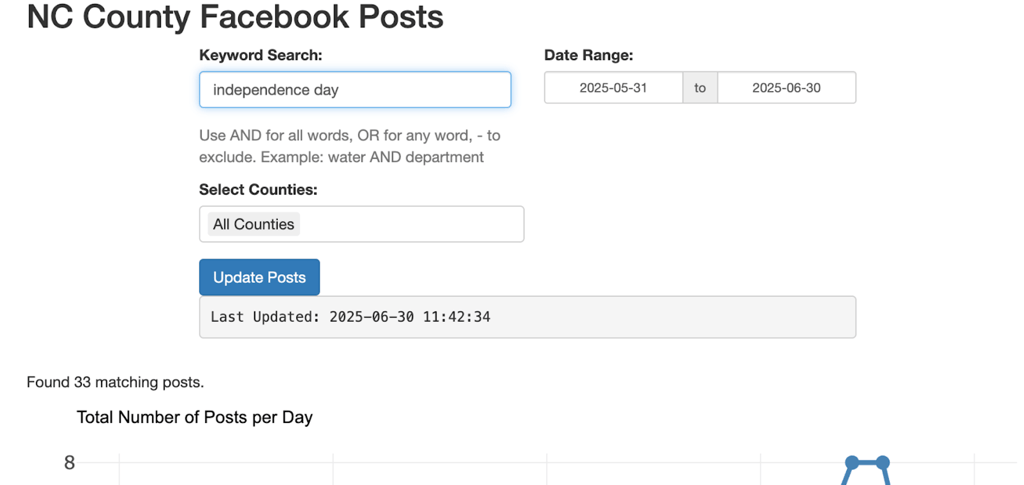Stuck on What to Post? You’re Not Alone
6/30/20253 min read


If you’ve ever stared at a blank caption box thinking, “What am I supposed to say about this council meeting?”, you’re in good company.
We’ve spent the last year interviewing dozens of public information officers, communications staff, council members, and state legislators about their experiences managing social media. From rural counties to big-city council offices, one issue came up more often than any other:
“I don’t know what to post.”
This post breaks down why that’s such a widespread pain point — and what we’ve learned about solving it.
The Problem: Government Social Media Is Harder Than It Looks
Let’s start by validating the challenge. Social media for government isn’t just about announcing ribbon cuttings or quoting press releases. It’s about making policy accessible, humanizing government, nurturing community, and managing communication risk — all while working with limited time, staff, and tools.
Here are three specific reasons we’ve heard time and again why public officials and their teams struggle to generate content:
1. The Policy-to-Post Gap
Government work is complex. Translating legislation, zoning decisions, or water rate adjustments into something the average resident wants to read on Instagram is a skill — and often, a burden.
What we heard:
“Turning legalese into plain language posts is so time-consuming.” – PA State Rep staffer
“We want transparency, but we also don’t want to confuse or bore people.” – Local council member, city in Washington
“Even with a video and ChatGPT, people still didn’t get what we meant about property revaluation.” – PIO, county in North Carolina
2. Fear of Getting It Wrong
There’s a real sense of risk around public posting. Even well-meaning updates can get taken out of context, misinterpreted, or attract off-topic backlash.
What we heard:
“Some of our council members just stopped posting because of one bad experience.” – PIO, City in Texas
“We always check what other counties are saying before we hit publish.” – PIO, North Carolina County
“What works in one town might blow up in another.” – City communications team in Arizona
3. No Time to Be Creative
When you’re juggling requests from a dozen departments — or serving constituents part-time while holding a day job — it’s hard to dream up creative, on-brand content ideas.
What we heard:
“I have more ideas than I can execute.” – Iowa state agency Comms Manager
“I manage 19 Facebook pages manually.” – Nebraska City PIO
“We know we should post more, but we don’t have capacity.” – City PIO, North Carolina
The Solution: Don’t Reinvent the Wheel — Learn from What’s Already Working
Here’s the good news: you don’t have to start from scratch every time. Many of the most successful government communicators are finding new ways to make content creation faster, smarter, and safer by building on what others are already doing.
Here are three proven strategies we recommend:
✅ 1. Peer Post Benchmarking
Rather than guessing how to frame a tricky issue — like stormwater fees, tax increases, or development disputes — some of the savviest communicators start by looking at how other cities or counties have handled it.
What kind of language did they use?
Did they include visuals, video, or FAQs?
What was the public response?
Try this: Use a search tool (like the one we’ve built) to scan hundreds of real government posts by keyword or topic. It’s a fast way to borrow proven approaches and avoid common pitfalls.
✅ 2. Ready-to-Use Content Prompts
Your week shouldn’t start with “what should we post?” A good content prompt system can give you:
Suggested topics tied to local events or seasons
Caption templates
Post timing recommendations
Examples from similar agencies
Some communicators do this informally (with Google Docs and Slack channels). Others are starting to use automated tools that recommend content based on local data and resident interest.
✅ 3. Soft Content That Still Builds Trust
You don’t need to break news every day. Some of the highest-performing government posts are surprisingly simple:
A behind-the-scenes photo with a quick “here’s what we’re working on”
A staff spotlight or Q&A
A post that ties a policy issue to a local business, school, or landmark
A pop culture reference with broad appeal (shoutout to the official who tied a public health update to Eagles football)
This “relatable-but-relevant” content builds familiarity — which is a prerequisite for trust.
How We Can Help
We’ve taken all this feedback and are building tools specifically for public officials who want to post better, faster, and with less stress.
A searchable archive of government posts, sortable by topic, location, and engagement
A recommendation engine that gives you timely, high-impact post ideas based on your role and region
A lightweight platform to manage drafts, share templates, and align your team — without a steep learning curve
And we’re pricing it for the real world, local officials, government nonprofits, community leaders, costing around 1/10th of what our competitors charge.
A Final Thought: It’s Not About Going Viral
Public-sector social media isn’t about likes or clout — it’s about connection. Every clear, timely, human post helps residents better understand what their government is doing and why it matters.
You don’t need to post every day. You just need to post better, and a little more often. And we’re here to help make that easier.
